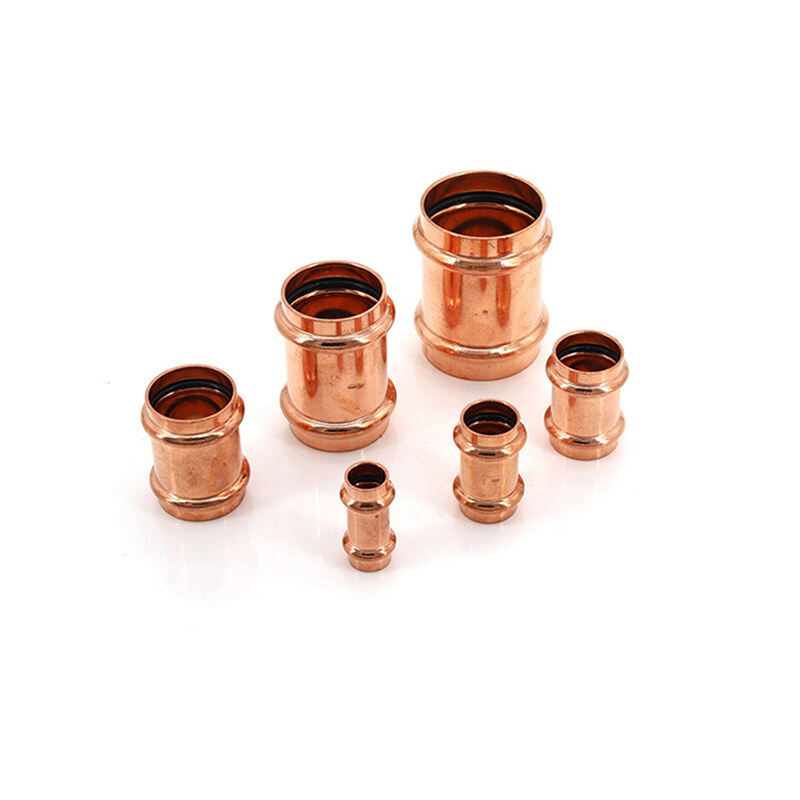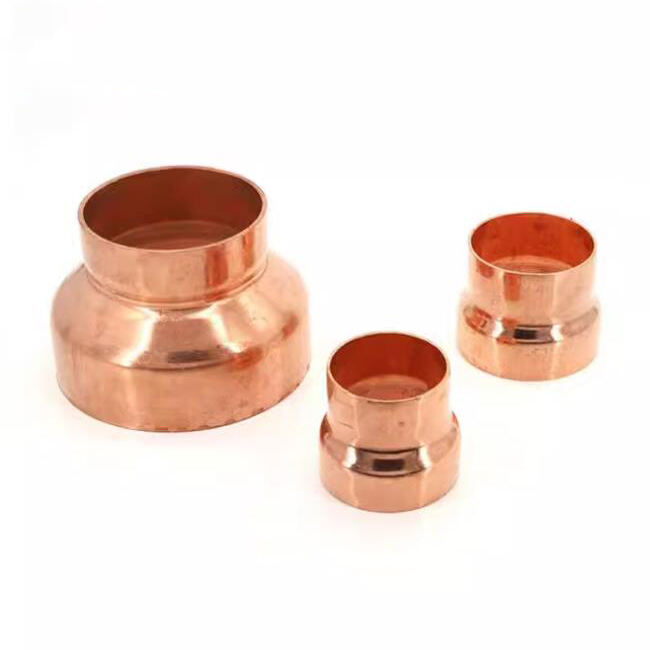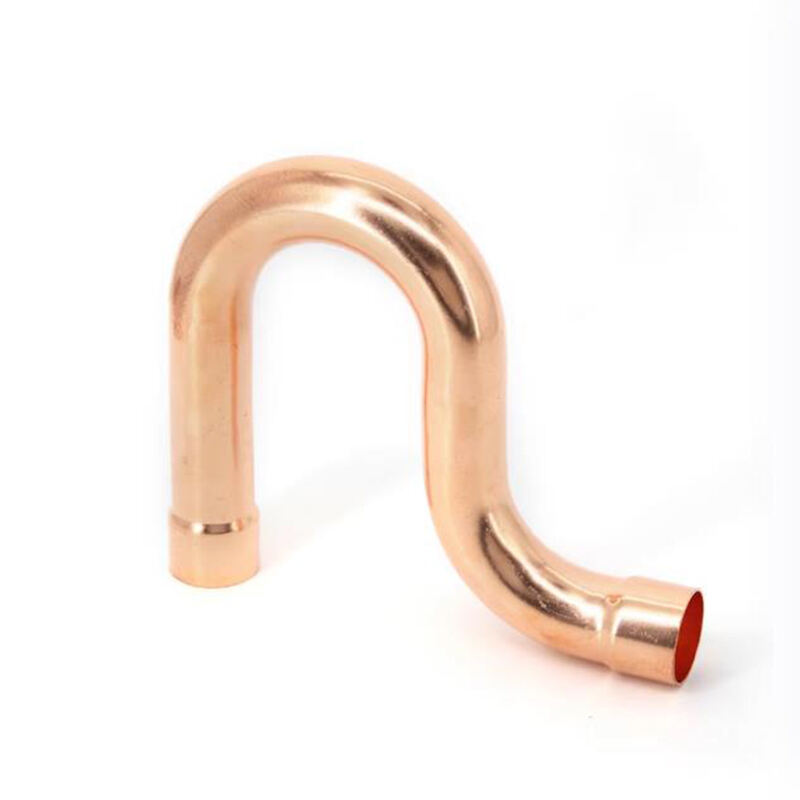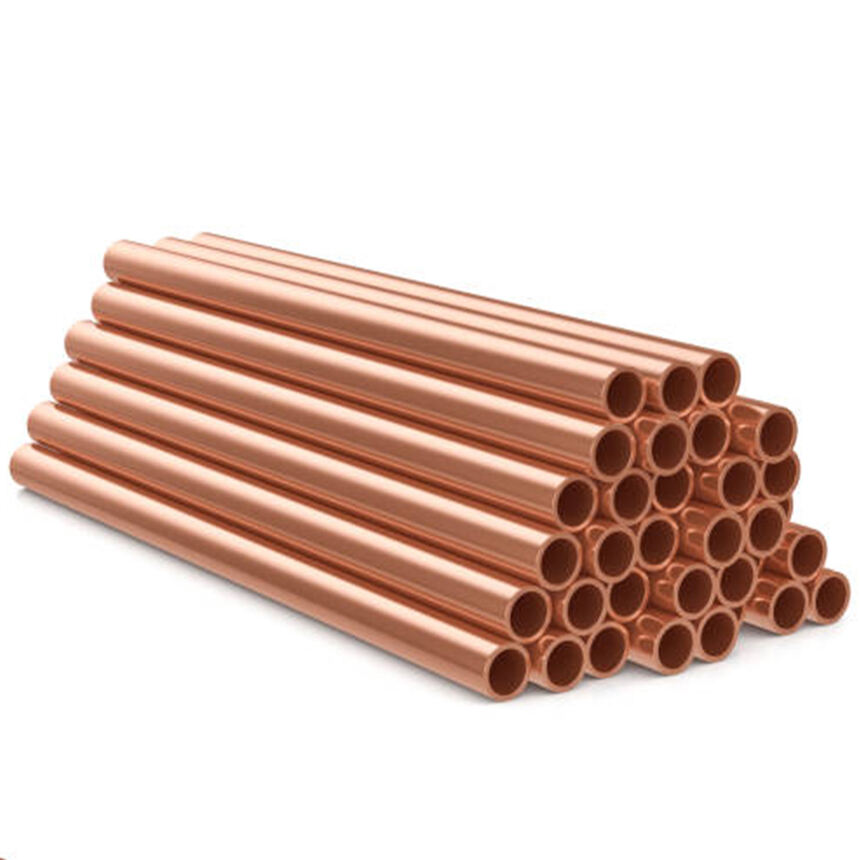Material Composition: Copper's Role in Water vs. Air Systems
Copper Pipe Properties for Liquid vs. Gas Conveyance
Copper stands out as a great choice for transporting both water and air through pipes and ducts. The way copper conducts heat and electricity so well means it transfers energy efficiently, which works really well when moving hot water or compressed air around buildings. Another plus is how soft copper is compared to other metals. This makes it easier to bend into those tight corners and shape into all sorts of fittings without cracking or breaking during installation, especially useful in older buildings where space gets cramped. Plus, copper doesn't rust or corrode easily, so these pipes last much longer than alternatives even when exposed to moisture or chemicals over time. We've seen this work in practice across countless plumbing systems and HVAC installations. Copper piping just keeps going strong year after year despite whatever environmental challenges come its way.
Brass Fittings Compatibility with Different Media
Brass fittings work great with copper pipes because they handle water, air, and various fluids without issues. They create tight seals that stop leaks even when temperatures fluctuate throughout the day or season. Brass itself is basically copper mixed with zinc, and this combination makes it pretty resistant to rust and corrosion. That's why these fittings last so long in both water lines and gas systems. Plumbers and HVAC technicians often reach for brass fittings when installing systems that need to handle multiple types of media simultaneously. The stuff just keeps working properly year after year without needing frequent replacements.
Comparison with PVC and PEX in Dual Applications
When dealing with installations that require both water and air systems running together, copper stands out as a better choice than options like PVC or PEX tubing. Most people know that PVC and PEX struggle when exposed to high heat, making them unsuitable for hot water lines. Copper handles this just fine though, so plumbers can install it confidently knowing it will work safely even under pressure. Another thing worth mentioning is how much stronger copper actually is compared to those plastic pipes. We've seen copper lines last decades without issues while plastic ones tend to crack or degrade over time, requiring more frequent repairs. Plus there's the whole recycling angle too. Copper can be melted down and reused again and again, something neither PVC nor PEX can claim. Homeowners looking for green building materials often gravitate toward copper because of this factor alone. No wonder why so many contractors stick with copper whenever they need piping that works equally well for both cold and hot applications across different parts of a building system.
Structural Requirements for Fluid vs. Pneumatic Transport
Wall Thickness Variations in Copper Tube Applications
How thick the walls of copper tubing are makes all the difference when it comes to keeping water and air systems safe and working properly. When dealing with high pressure situations like HVAC installations or industrial pipe networks, we need those copper walls to be substantially thicker. Thicker walls stop the pipes from collapsing and keep them structurally sound even when subjected to intense forces. The ASTM B88 standard actually lays out specific measurements for how thick these copper tubes should be. This matters because following these guidelines ensures copper remains a top choice for plumbers and HVAC technicians who need materials that can handle serious pressure without failing over time.
Diameter Specifications for Optimal Flow Dynamics
Getting the right copper pipe diameter specs matters a lot when it comes to keeping things flowing properly in both liquid and air systems. The inside diameter makes all the difference in how fast stuff moves through the pipes, which directly impacts how well everything works together. For water lines specifically, bigger pipes tend to cut down on those annoying velocity losses that happen when water speeds up too much, so we get steadier flow rates across the board. When dealing with compressed air systems, getting the diameter just right becomes even more important because wrong sizing leads to poor airflow distribution throughout the facility. Most plumbers know this from experience after seeing what happens when someone cuts corners on pipe selection. Choosing the correct copper pipe size based on what the system actually needs isn't just good practice it's basically essential if companies want their operations running smoothly day after day.
Joint Integrity with Brass Plumbing Fittings
Keeping those brass plumbing fittings intact at the joints really matters, particularly for systems where temperature changes happen all the time and pressure levels go up and down. Brass fittings create mechanical connections that need to handle all this movement without letting water escape or causing safety problems down the line. A good idea is checking those connections every so often, maybe once a year or after major temperature swings, to catch any small cracks or weaknesses before they turn into bigger headaches. How these joints are actually made makes a big difference too. Soldering remains one of the most common approaches, but getting the technique right matters a lot. Poor solder jobs lead to leaks, while proper ones keep both water lines running smoothly and compressed air systems operating reliably for years on end.
Pressure Dynamics in Hydronic and Pneumatic Networks
Copper Pipe Pressure Ratings Comparison
Copper pipes come with standard pressure ratings set by the industry, and these numbers really matter when figuring out where they should go in various plumbing setups. Engineers and plumbers rely on these specs to pick the right copper tubing for water lines or compressed air systems, making sure whatever gets installed won't burst under normal operating conditions. Getting this wrong can be a big problem down the road if someone installs weaker pipes than needed. On the flip side, going beyond what's strictly required in terms of pressure capacity isn't just overkill it's actually smart practice that prevents disasters later on. Proper selection based on actual pressure needs keeps everything running safely while extending how long those copper pipes will last before needing replacement.
Burst Resistance in Water vs. Compressed Air Systems
The strength of copper makes it stand out when dealing with pressure spikes, which explains why so many businesses and industries rely on it for their piping needs. When systems need to handle sudden bursts without failing, copper just works better than most alternatives. Looking at water systems specifically, things like how hot or cold the surrounding environment gets, plus moisture levels in the air, actually impact how well copper holds up under stress. The same goes for compressed air systems too. These environmental factors matter a lot in both cases, which means anyone working with these systems really should know what kind of conditions their materials will face day to day.
Brass Hose Fittings for Pressure Regulation
Brass hose fittings play a key role when it comes to controlling pressure in pneumatic systems because they're tough and can handle different situations. What makes them so useful is that they come in various sizes and configurations, allowing them to work well across many types of equipment setups. Keeping these brass fittings in good shape matters a lot too. Neglecting regular checks might lead to unexpected pressure loss problems down the road, something no one wants during operation. When companies actually take time to look at their fittings periodically and replace worn parts as needed, they end up with much better control over system pressures. This attention to detail not only keeps things running smoothly day after day but also extends how long the whole setup lasts before needing replacement.
Thermal Considerations for Copper Conduits
Heat Transfer Properties in HVAC Applications
The high thermal conductivity of copper is one reason why it remains popular for HVAC work. When copper transfers heat so effectively, HVAC systems just run better overall. Putting copper tubing throughout these systems allows for faster heat movement between components, which means less wasted energy and lower bills at the end of the month. Proper insulation around those copper lines matters too though. Without good insulation, all that great thermal performance gets lost somewhere along the way. Most technicians will tell anyone who asks that keeping those copper conduits well insulated is what keeps the whole system running smoothly year after year.
Freeze Protection Strategies for Water Lines
Copper water lines need proper freeze protection to keep working right when winter hits hard. Places where temperatures plunge below freezing regularly require pipe insulation as the main defense against frozen pipes. Without it, we've all seen what happens when pipes burst after being frozen solid overnight. Just running water continuously through the system helps too, especially during those unexpected cold snaps that catch everyone off guard. Some local building codes actually require certain protective steps for homes and businesses in frost belt regions. Compliance isn't optional here because broken pipes mean expensive repairs and major headaches come spring thaw.
Condensation Management in Air Pipes
Condensation control in copper air piping systems remains a key concern for preventing all sorts of moisture problems down the line. When left unchecked, water buildup inside these pipes leads to corrosion that eats away at metal surfaces over time, plus creates maintenance headaches nobody wants to deal with. Good system design incorporates drip legs or traps right from the start since they collect and remove condensate before it becomes an issue. Insulation also plays its part here by reducing temperature differences that cause condensation in the first place. Properly insulated copper pipes not only last longer but deliver cleaner air throughout industrial facilities. Most plant engineers know that getting condensation management right makes all the difference between smooth operations and costly repairs later on.
Installation & Maintenance Best Practices
Soldering techniques for copper tube joints
Getting good at soldering makes all the difference when it comes to making those copper tube joints hold up over time and keeping leaks at bay. When doing the job right, workers need to pick out the right kind of flux and solder material because this actually affects how strong and lasting the joint will be. A solid solder job creates a seal that holds up against both pressure changes and temperature swings, which means these connections won't fail down the road. Most plumbers know that following proper training programs and sticking to established industry guidelines keeps things consistent from one installation to another, something that matters a lot when dealing with water systems where failures can be expensive and dangerous.
Corrosion prevention in wet/dry environments
Knowing what kinds of corrosion hit copper in different settings really matters when trying to stop damage before it happens. Copper tends to corrode in various ways depending where it sits - think pits forming here and there or those tricky crevices getting attacked over time. To keep things from going south too fast, folks often slap on protective coatings, go for materials that stand up better against rust, and pay attention to what's happening around them environmentally speaking. The whole game changes though when regular checks become part of maintenance routines. Spotting problems early through these inspections makes all the difference in extending how long copper components last without needing replacement.
Inspection protocols for brass plumbing fittings
Checking brass fittings regularly keeps plumbing systems intact and stops those annoying leaks before they become disasters. A good inspection list makes sure nothing gets missed when looking at these components, covering everything from obvious signs of wear on surfaces down to how solid the structure feels inside. When plumbers stick to regular maintenance routines, brass fittings tend to last much longer while allowing problems to catch attention early enough to fix them without major headaches later on. These simple checks really matter because reliable water flow through pipes isn't just convenient it's essential for daily operations across homes and businesses alike.









